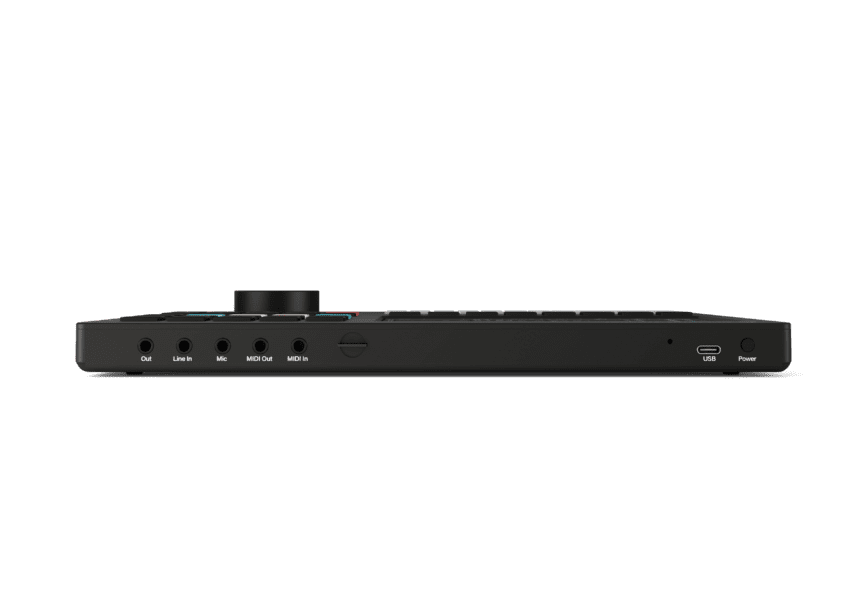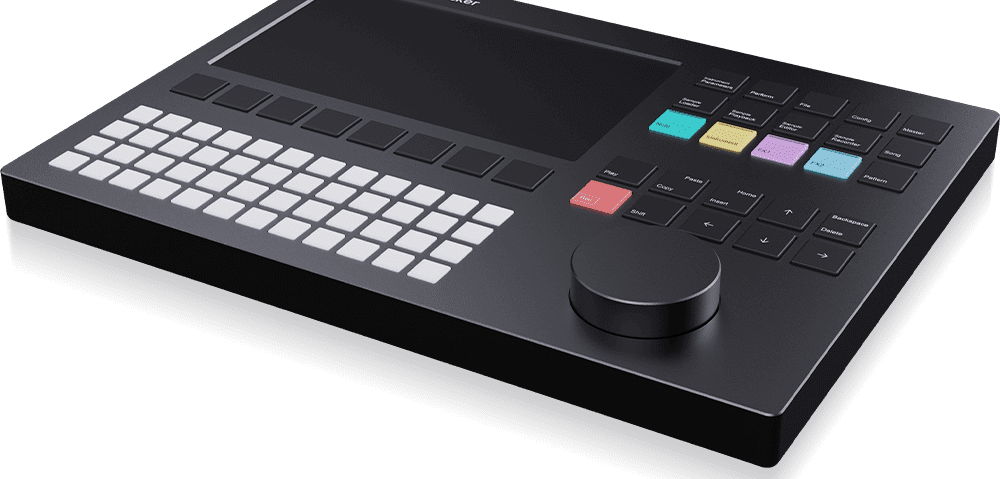For anyone hoping that a new groovebox would appear with a software tracker-style interface, behold: Polyend Tracker.
Most modern grooveboxes aren’t markedly different from older products. Typically they are some sort of hybrid sampler, synthesizer, and sequencer on which musicians can design and produce entire songs. With Tracker, Polyend hopes to remake the entire groovebox game. And, as its name clearly suggests, it is inspired by tracker software such as Renoise.

While Tracker’s form factor resembles that of the MPC Live, with its buttons and large LCD screen, as well as Ableton Push and Native Instruments Maschine controllers, there is a lot more going on beneath its hood. Fully standalone and portable, Tracker features a sampler, wavetable synth, granular synth, and—like Teenage Engineering’s OP-1—a FM radio through which users can sample material.
This is quite a lot of sonic material for generating sounds. To turn these sounds into actual songs, Polyend gives Tracker a step sequencer and arranger, as well as a performance mode which musicians can use to splice and warp sounds in real-time for recording or live performance. And with bi-directional MIDI, Tracker is designed to play well with other pieces of hardware and software.
As with Renoise and other trackers, Polyend’s Tracker features a vertical timeline for arranging songs. Unlike software trackers, however, this groovebox can be controlled via a sequencer and mechanical keyboard, which also features a large dial for accessing features.
Tracker holds up to 48 instruments and 256 patterns (maximum of 128 steps-per pattern). Other features include a randomizer, a probability function, automatic fill, micro-tuning and -timing, effects (per step), selection rendering, and rolls, amongst others. Tracker is also MOD file format compatible (MOD is the format used by other music software trackers).
Tracker is on pre-order now. For the full list features and technical specifications, head over to the Polyend Tracker website.

